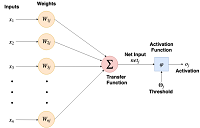Combining Cloud Computing and Artificial Intelligence Scene Recognition in Real-time Environment Image Planning Walkable Area
DOI:
https://doi.org/10.46604/aiti.2020.4284Keywords:
TensorFlow, computer vision, neural network, scene recognition, cloud computingAbstract
This study developed scene recognition and cloud computing technology for real-time environmental image-based regional planning using artificial intelligence. TensorFlow object detection functions were used for artificial intelligence technology. First, an image from the environment is transmitted to a cloud server for cloud computing, and all objects in the image are marked using a bounding box method. Obstacle detection is performed using object detection, and the associated technique algorithm is used to mark walkable areas and relative coordinates. The results of this study provide a machine vision application combined with cloud computing and artificial intelligence scene recognition that can be used to complete walking space activities planned by a cleaning robot or unmanned vehicle through real-time utilization of images from the environment.
References
S. Ren, K. He, R. Girshick, and J. Sun, “Faster R-CNN: towards real-time object detection with region proposal networks,” IEEE Transactions on Pattern Analysis and Machine Intelligence, vol. 39, no. 6, pp. 1137-1149, 2017.
T. Y. Lin, M. Maire, S. Belongie, L. Bourdev, R. Girshick, J. Hays, P. Perona, D. Ramanan, C. L. Zitnick, and P. Dollár, “Microsoft COCO: common objects in context,” arXiv:1405.0312v3 [cs.CV], February 2015.
A. G. Howard, M. Zhu, B. Chen, D. Kalenichenko, W. Wang, T. Weyand, M. Andreetto, and H. Adam, “MobileNets: efficient convolutional neural networks for mobile vision applications,” arXiv:1704.04861 [cs.CV], 2017.
R. Girshick, J. Donahue, T. Darrell, and J. Malik, “Rich feature hierarchies for accurate object detection and semantic segmentation,” Proc. The IEEE Conference on Computer Vision and Pattern Recognition (CVPR), IEEE Press, June 2014, pp. 580-587.
W. Liu, D. Anguelov, D. Erhan, C. Szegedy, S. Reed, C. Y. Fu, and A. C. Berg, “SSD: single shot multibox detector,” Proc. Part I: ECCV 2016-the 14th European Conference, Amsterdam, Netherlands, October 2016, pp. 21-37.
K. He, X. Zhang, S. Ren, and J. Sun, “Deep residual learning for image recognition,” Proc. 2016 IEEE Conference on Computer Vision and Pattern Recognition (CVPR), IEEE Press, Jun. 2016, pp. 770-778.
C. Ning, H. Zhou, Y. Song, and J. Tang, “Inception single shot multibox detector for object detection,” Proc. 2017 IEEE International Conference on Multimedia & Expo Workshops (ICMEW), IEEE Press, 2017, pp. 549-554.
J. S. Sheu and Y. L. Huang, “Implementation of an interactive TV interface via gesture and handwritten numeral recognition,” Multimedia Tools and Applications, vol. 75, no. 16, pp. 9685-9706, 2016.
R. Kaluri and P. Reddy, “Optimized feature extraction for precise sign gesture recognition using self-improved genetic algorithm,” International Journal of Engineering and Technology Innovation, vol. 8, no. 1, pp. 25-37, 2018.
C. H. Chen, C. M. Kuo, C. Y. Chen, and J. H. Dai, “RETRACTED: the design and synthesis using hierarchical robotic discrete-event modeling,” Journal of Vibration and Control, vol. 19, no. 11, pp. 1603-1613, 2012.
M. Abadi, P. Barham, J. Chen, Z. Chen, A. Davis, J. Dean, M. Devin, S. Ghemawat, G. Irving, M. Isard, M. Kudlur, J. Levenberg, R. Monga, S. Moore, D. G. Murray, B. Steiner, P. Tucker, V. Vasudevan, P. Warden, M. Wicke, Y. Yu, and X. Zheng, “TensorFlow: a system for large-scale machine learning,” arXiv:1605.08695 [cs.CV], 2016.

Published
How to Cite
Issue
Section
License
Submission of a manuscript implies: that the work described has not been published before that it is not under consideration for publication elsewhere; that if and when the manuscript is accepted for publication. Authors can retain copyright in their articles with no restrictions. is accepted for publication. Authors can retain copyright of their article with no restrictions.
Since Jan. 01, 2019, AITI will publish new articles with Creative Commons Attribution Non-Commercial License, under The Creative Commons Attribution Non-Commercial 4.0 International (CC BY-NC 4.0) License.
The Creative Commons Attribution Non-Commercial (CC-BY-NC) License permits use, distribution and reproduction in any medium, provided the original work is properly cited and is not used for commercial purposes.







